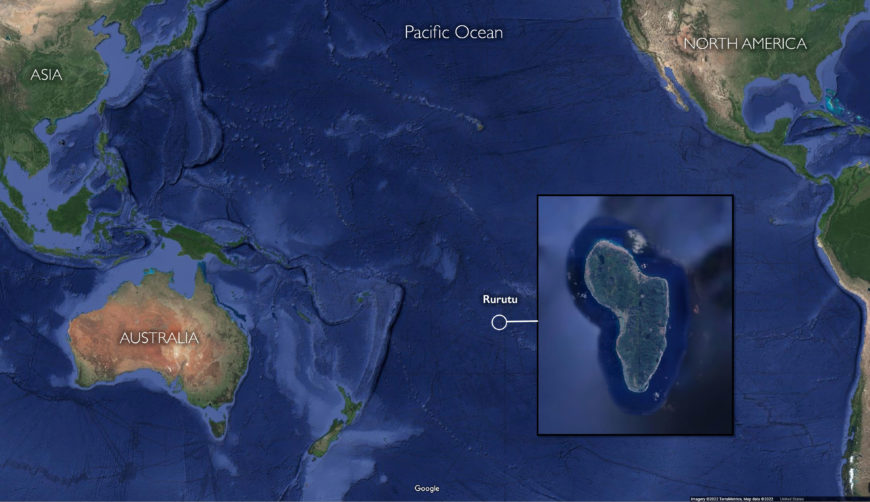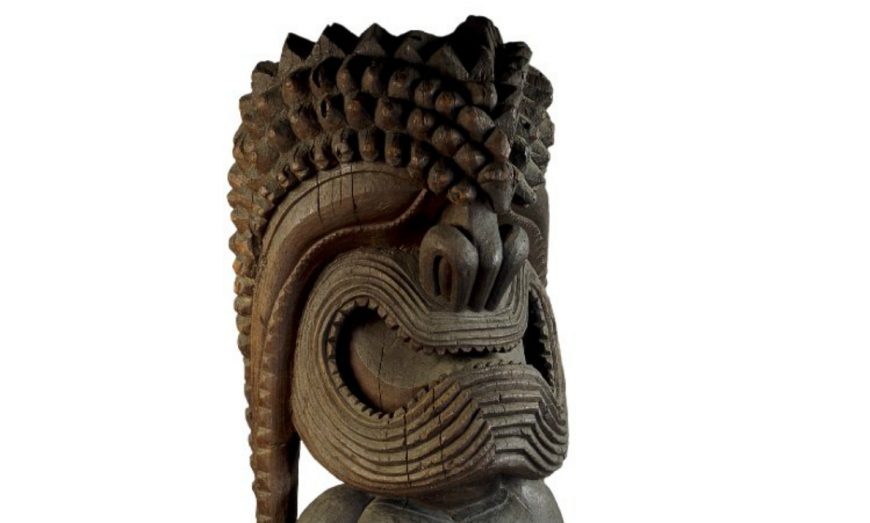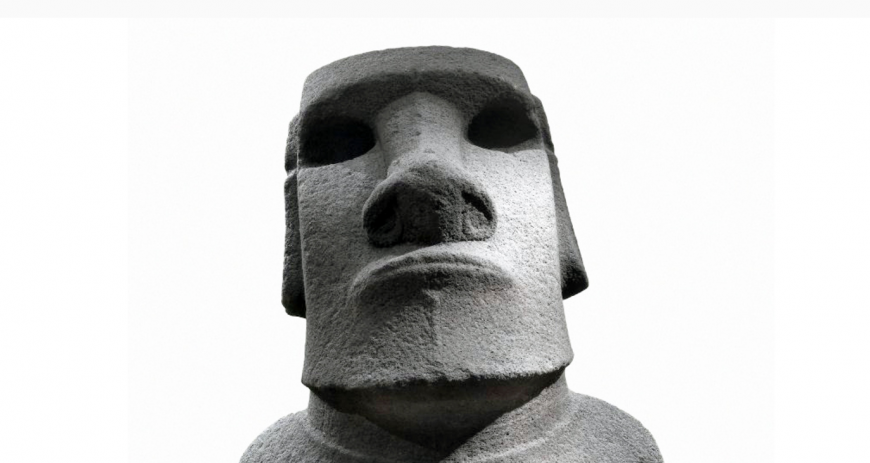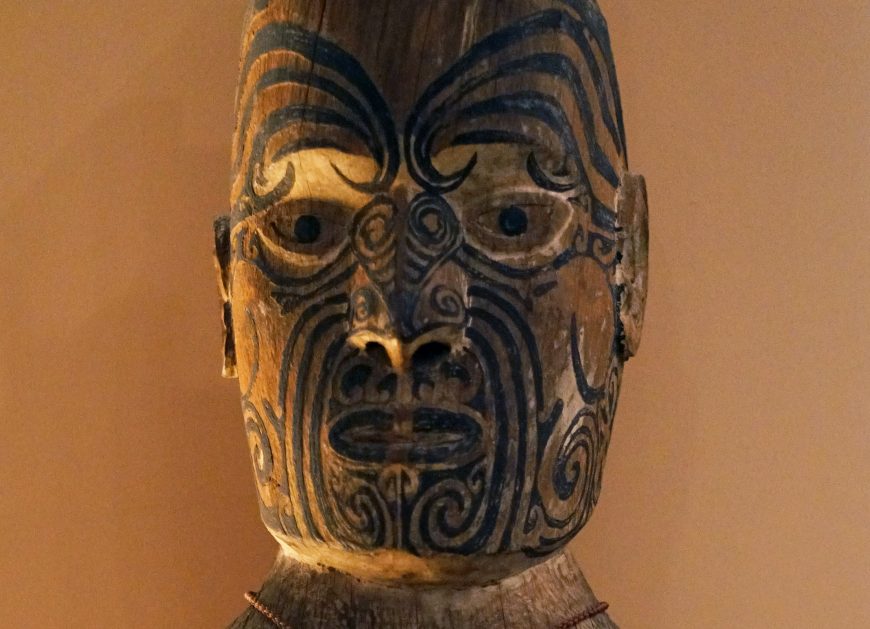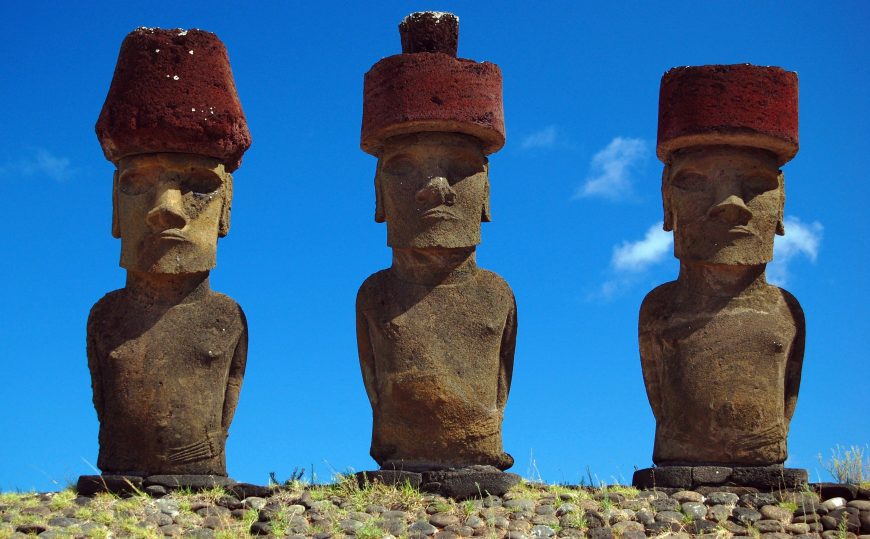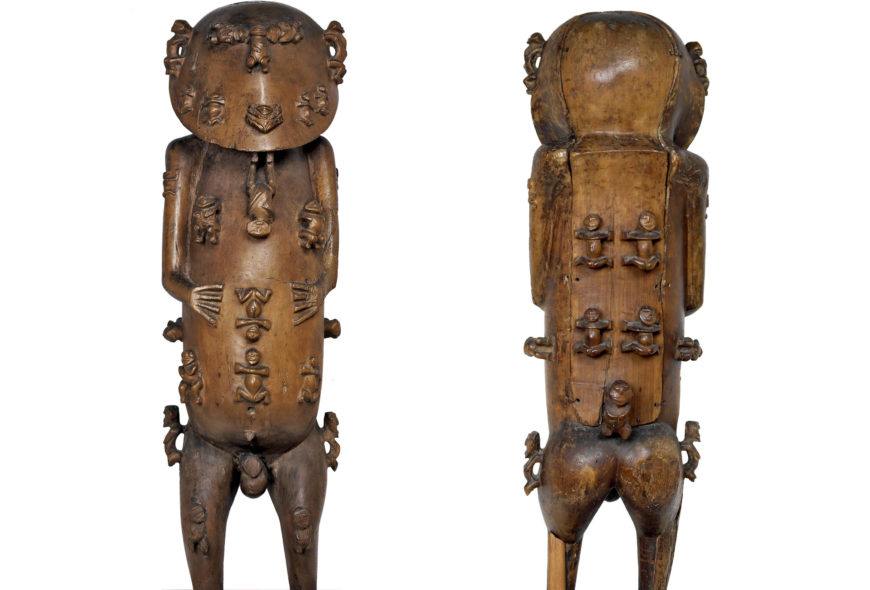
Two views, Carved wooden figure known as A’a, late 18th century C.E. (Raiatea, Rurutu, Austral Islands, French Polynesia), hardwood, possibly pua, 117 cm high (© The Trustees of the British Museum, London)
A presentation to missionaries
In August 1821, a group of people from Rurutu in the Austral Islands, in the south-eastern Pacific Ocean, traveled north to the island of Ra’iatea in the Society Islands, to a London Missionary Society station. There, they presented to the missionaries a number of carved figures that represented their gods, as a symbol of their acceptance of Christianity. The population of Rurutu had all converted to Christianity in obedience to a decision made by their highest leaders. This figure was among those presented, and is described by one of the missionaries at the time, John Williams. It was taken into the London Missionary Society collections, brought to London in 1822, and subsequently sold to The British Museum in 1911.
There is debate about which of the Rurutu gods this figure represents. John Williams identifies it as A’a. The god is depicted in the process of creating other gods and men: his creations cover the surface of his body as thirty small figures.
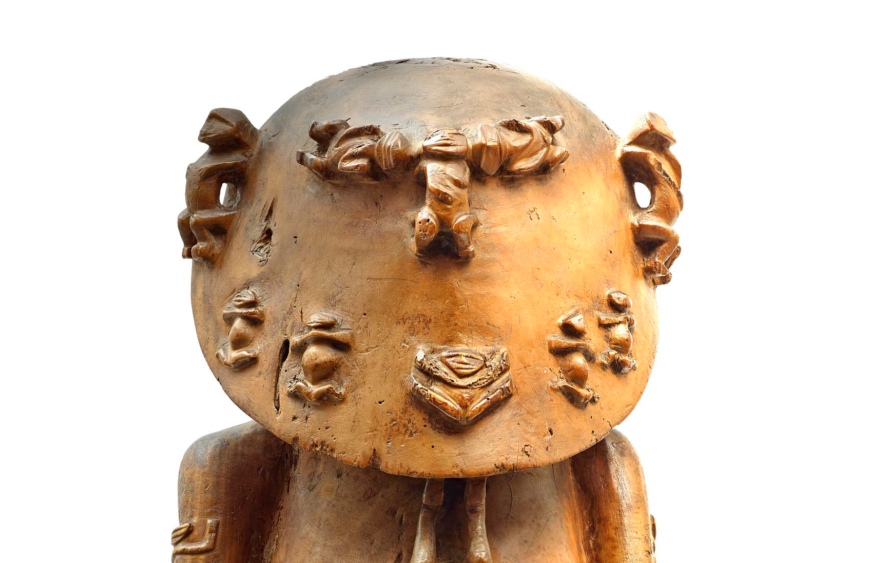
Face (detail), Carved wooden figure known as A’a, late 18th century C.E. (Raiatea, Rurutu, Austral Islands, French Polynesia), hardwood, possibly pua, 117 cm high (© The Trustees of the British Museum, London)
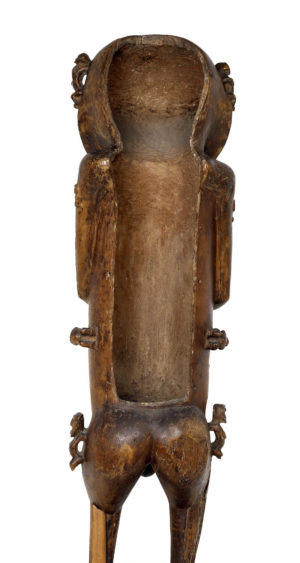
View with open back, Carved wooden figure known as A’a, late 18th century C.E. (Raiatea, Rurutu, Austral Islands, French Polynesia), hardwood, possibly pua, 117 cm high (© The Trustees of the British Museum, London)
The figure itself is hollow; a removable panel on its back reveals a cavity which originally contained twenty-four small figures. These were removed and destroyed in 1882. Contemporary Rurutuans explain that the exterior figures correspond to the kinship groups that make up their society, and propose a number of theories about the relationship between the figure and Christianity. It is carved from hardwood, probably from pua (Fagraea).
“There is a Supreme God in the ethnological section”
Since it came to London the figure has attracted considerable attention, and it is widely regarded as one of the finest pieces of Polynesian sculpture still in existence. It influenced the sculptor Henry Moore, and is also the subject of a poem by William Empson (1906–84), “Homage to the British Museum,” quoted below:
There is a Supreme God in the ethnological section;
A hollow toad shape, faced with a blank shield.
He needs his belly to include the Pantheon,
Which is inserted through a hole behind.
At the navel, at the points formally stressed, at the organs of sense,
Lice glue themselves, doll, local deities,
His smooth wood creeps with all the creeds of the world.Attending there let us absorb the culture of nations
And dissolve into our judgement all their codes.
Then, being clogged with a natural hesitation
(People are continually asking one on the way out),
Let us stand here and admit that we have no road.
Being everything, let us admit that is to be something,
Or give ourselves the benefit of the doubt;
Let us offer our pinch of dust all to this God,
And grant his reign over the entire building.William Empson, “Homage to the British Museum”
© The Trustees of the British Museum


